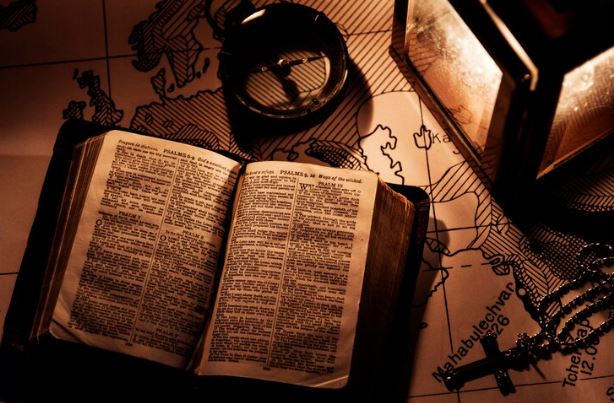Who is the author of the Old Testament?
When asked the above question, everyone is surprised to find how many readers of the Old Testament respond by repeating what they read in the Bible’s epilogue. It also happens that although it was inspired by the Holy Spirit, Hazrat Jibreel (peace be upon him) and it was written down by humans, but its author is God Himself.
Sometimes the person reporting on the existence of the Holy Book, while providing information to the people, limits himself to this brief statement, which leaves no room for further questions, and sometimes, while giving an answer, he expands it. It gives that in the early text, the details were provided by humans, but despite this, there is no change in the general authenticity of a text that emerges from the context of a text. It is emphasized that the Lords of the Church, who are the only body to inform the faithful about such conduct, respond to it with the help of the Holy Spirit. They continued to draw out lists of holy books and they were approved by the Councils of Florence and the First Vatican Council, which they brought to Mansa Martyrdom, which we now call the list of Gospels. This council published a text that dealt with inspiration and spent three years desperately trying to create what was so important and necessary that the majority of biblical scholars would see this most satisfying text in the Bible. It follows this confirmation of its originality and does not consider it necessary to discuss what happened in the past centuries.
But when one turns to the books which were written by the priests and which are not meant for general reading, one finds that the question of authenticity of the books which are included in the Holy Bible is correct. is much more complicated than it appears at first glance. For example, when one turns to the modern edition of the separate French Bible, which was translated under the supervision of the Darbastan of Jerusalem, it is quite clear that appears different and he begins to feel that the Old Testament, like the New Testament, raises issues of conflict that have not been hidden by most exegetical writers.

We also find very clear hypotheses in a relatively brief study of a very objective nature, such as Professor Edmund Jack’s sketch of the Old Testament, which appears to be an excellent general commentary in this book.
Many people are unaware of this, and Adam Jack reveals that the Old Testament did not originate from one, but from several texts, so that around the 3rd century BC there were three texts in the Hebrew language.

A text that became the Mysore text and was at least partially used in the Greek translation, as well as the Samaritan text of the first five books of the Afsar Khamsa To Night, began as early as the first century BCE to establish a single text for all. But it was not possible for everyone to agree on a single text even a century after the time of Jesus.
If we had those three samples of text before us, it would be easy to compare them and form an opinion on what it must have looked like in the beginning, but unfortunately we don’t have the slightest sample available near the Dead Sea. There is a manuscript of the cave ruler whose era is a year before Christ
(Manuscript Gharak Gumran The collection of ancient manuscripts and tamars that were found in 1947 in a cave two kilometers from the northern end of the Dead Sea, located a kilometer outside Jiri on the west side of the Jordan River. Dated from 22 BC to 100 AD, these texts were painstakingly collated and read. Five of them are currently preserved at the Hebrew University of Jerusalem and five are in Syria.)
It is a cypress manuscript of the 10th century AD, and it shows differences from the ancient text. Century AD has to be believed
Probably the earliest translation of the Greek language, Shivapota Gent, dates back to the 3rd century BC and was written by the Jews in Alexandria. This is the text on which the New Testament is based. Until AD, the primary Greek texts generally used in Christendom were compiled from the manuscripts registered in the Vatican as the Codex Vaticanus and the Codetas Centacus in the British Museum in London. 4th century CE
In the early fifth century AD, St. Jerome, using the Hebrew texts, produced a text in Latin, which later became known as the Well Gate Public because of its universal publication after the seventh century AD.
In addition, we will refer to the Aramaic and Syrian translation, but it should be noted that it is incomplete. Latin collections were published in which the Hebrew, Greek, Latin, Syriac, Aramaic, and even the Arabic translations were arranged side by side, and this was adopted in the famous Vatican translation. As a result of the concept, different Christian churches do not all believe in the same books and there is still no uniformity in their views on translations into the same language. has written together is a work that will create unity, this work is nearing completion and it should be worshiped in the form of a work of unity.



















